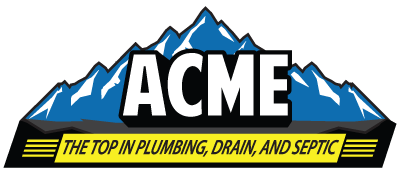Top Signs of a Sewer Line Backup and How to Address Them Quickly
A sewer line backup is a serious plumbing issue that can cause significant damage to your home and health if not addressed promptly. Identifying the signs early and taking swift action can prevent costly repairs and protect your property. Here are the top signs of a sewer line backup and how to address them quickly.
Top Signs of a Sewer Line Backup
Multiple Drain Clogs: One of the most common signs of a sewer line backup is multiple drains clogging simultaneously. If you notice that your sinks, toilets, and showers are all draining slowly or are completely clogged, this could indicate a blockage in your main sewer line.
Gurgling Noises: If you hear gurgling sounds coming from your drains or toilets, it could be a sign that there is a blockage in your sewer line. These noises occur when air is trapped in the pipes and is forced out as water tries to flow through.
Foul Odors: A strong, unpleasant odor coming from your drains or around your home could indicate a sewer line backup. The smell is usually a result of sewage that cannot properly flow through the pipes and is backing up into your home.
Water Backing Up: If water starts to back up into your sinks, tubs, or toilets, it’s a clear sign of a sewer line issue. This often happens when there is a significant blockage preventing wastewater from flowing out to the municipal sewer system or septic tank.
Lush Patches of Grass: While it might seem like a good thing, unusually lush patches of grass in your yard can be a sign of a leaking sewer line. The extra nutrients from the sewage can cause the grass to grow more rapidly in those areas.
Slow Drains: Slow draining in multiple fixtures is a common symptom of a sewer line backup. While one slow drain might indicate a localized clog, multiple slow drains usually point to a more serious problem in the main sewer line.
How to Address Sewer Line Backups Quickly
Stop Using Water: If you suspect a sewer line backup, immediately stop using water in your home to prevent further damage. Avoid running any appliances that use water, such as dishwashers and washing machines, until the issue is resolved.
Identify the Problem: Try to determine whether the issue is isolated to one drain or affects multiple fixtures. If it’s the latter, it’s likely a sewer line issue, and you’ll need to contact a professional plumber.
Call a Professional Plumber: Sewer line backups require the expertise of a professional plumbing service like ACME Plumbing. They have the tools and experience to diagnose and fix the problem quickly. Look for a plumber who offers emergency services to address the issue promptly.
Use a Sewer Camera Inspection: A professional plumber will often use a sewer camera inspection to locate the blockage or damage in your sewer line. This allows them to accurately diagnose the problem and determine the best course of action.
Consider Hydro Jetting: Hydro jetting is a method used by plumbers to clear blockages in sewer lines. It involves using high-pressure water to remove debris, tree roots, and buildup from the pipes. This can be an effective solution for clearing severe blockages.
Prevent Future Issues: Once the immediate problem is resolved, take steps to prevent future sewer line backups. Avoid flushing non-biodegradable items, monitor what goes down your drains, and schedule regular plumbing inspections to catch potential issues early.
Sewer line backups can be a nightmare for homeowners, but recognizing the signs early and taking prompt action can mitigate the damage. Look out for multiple drain clogs, gurgling noises, foul odors, water backing up, lush patches of grass, and slow drains. If you notice any of these signs, stop using water and contact a professional plumber immediately. By addressing the issue quickly and implementing preventive measures, you can keep your sewer system functioning smoothly and avoid costly repairs in the future.
